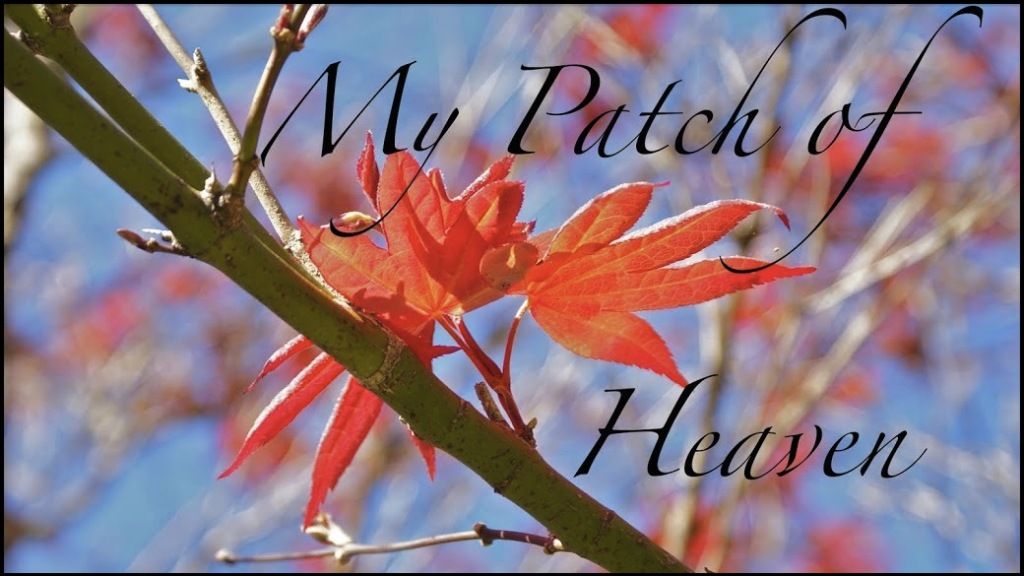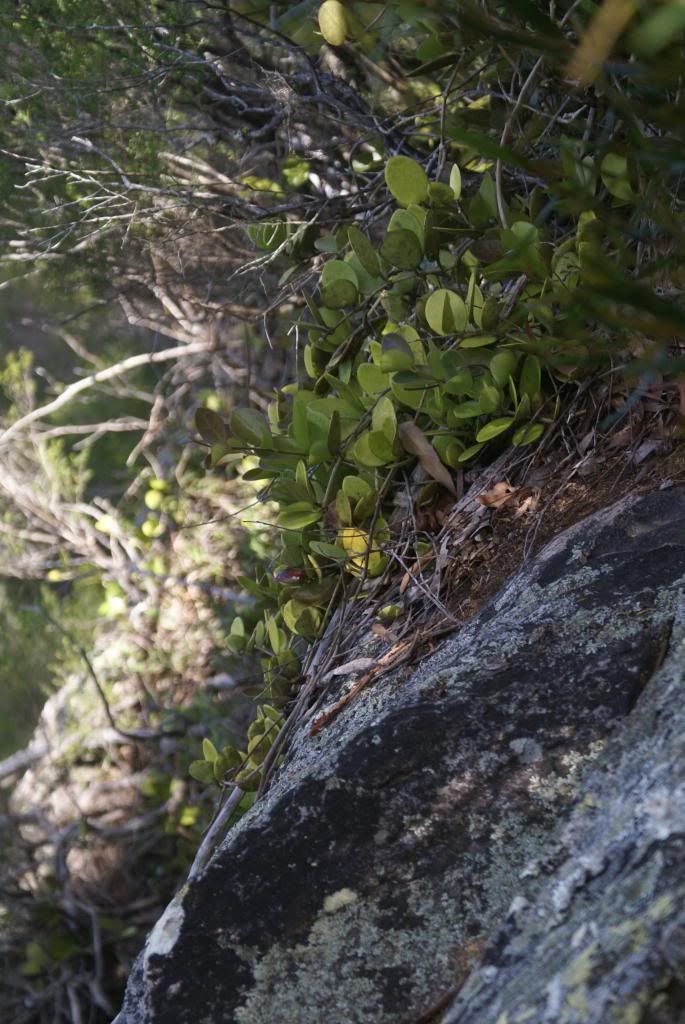Hey Everyone,
I have finally gotten off cloud nine, so now I can sit still long enough to tell you all.
I know it's not gardening or plant related, but who cares. A kid is allowed to be excited isn't he?
Well, my news is that last week my Mum and Dad bought me my first ever car. It's a brand new, red, Toyota Yaris. She drives like a dream and it's amazing. I've even named her Talullah, hehehe.
Well, sadly I'd best leave it at that because our power has been going on and off all day today due to the damage caused by Ex-Tropical Cyclone Oswald.
Monday, January 28, 2013
Monday, January 14, 2013
Chiloschista usneoides
 |
| The whole plant. It's about the size of my palm. |
 |
| Flowers the size of my little finger's fingernail |
I've been very excited this week because for the first time in the year and a half I've had this beauty, it's the first time I've seen a flower... Not that it hasn't tried to before.
I bought this roughly a year and a half ago when Woolf Orchidculture visited my Society to do a talk... I can't remember what it was about, but I do remember that I thoroughly enjoyed it. Well, I'd wanted one of these weird leafless orchids for quite some time, and I knew they grew them, so when they came to visit I decided to send them an email to see if they could bring one with them... Which they did.
Well, the first year I had this it attempted to grow a spike 3 times, within a couple of months, attempting to grow a total of 4 spikes. However, due to it's unfortunate habit of flowering during the middle of school exams I forgot to keep the water up to it so it sadly lost all those spikes. Then this year it did the same thing, and has thus far attempted to flower twice. First was during exam block, and as per usual I was too busy with school to keep up to the watering regime. But luckily this year it decided to give it one last try for the year, which thankfully occurred after my very cool purchase of an electronic watering system, so thankfully it had enough water to continue producing the spike. However, for some reason nature didn't want me to have too much fun, so I got attached by caterpillars which among several plants having the growth points being out of them, they ate the buds on my Chilo's spikes. But alas, like all good stories, one bud survived, and here it is.
Now, on with the scientificy stuff:
 Chiloschista is a genus of roughly 20 species. I say roughly because, as many orchid growers know, species are in an almost constant state of either consolidation, or separation, depending on new discoveries of either earlier publications of a species, or newly found information concerning the DNA of a plant. Chiloschista were formerly classed as being members of the Sarchochilus genus, however due to their leafless habit, and several other defining characteristic, they have been given their own genus. Chiloschista are found from Sri Lanka, to Nepal, and all the way east to northern, tropical, Australia. There has been extensive research, or so it seems, into the photosynthetic roots of the genus. I only say this because there seems to be quite a lot of internet articles about Chiloschista usneoides in particular, and the titles include mumbo jumbo such as "Photosynthetic Carbon Assimilation", and I can assure you I'll definitely be giving these articles a read... but once I get back into school mode, for now I'm in holiday mode and my brain is in peaceful relaxation.
Chiloschista is a genus of roughly 20 species. I say roughly because, as many orchid growers know, species are in an almost constant state of either consolidation, or separation, depending on new discoveries of either earlier publications of a species, or newly found information concerning the DNA of a plant. Chiloschista were formerly classed as being members of the Sarchochilus genus, however due to their leafless habit, and several other defining characteristic, they have been given their own genus. Chiloschista are found from Sri Lanka, to Nepal, and all the way east to northern, tropical, Australia. There has been extensive research, or so it seems, into the photosynthetic roots of the genus. I only say this because there seems to be quite a lot of internet articles about Chiloschista usneoides in particular, and the titles include mumbo jumbo such as "Photosynthetic Carbon Assimilation", and I can assure you I'll definitely be giving these articles a read... but once I get back into school mode, for now I'm in holiday mode and my brain is in peaceful relaxation. |
| Surprisingly flat blooms, except for the "lip" |
Happy Gardening Everyone,
Michael
P.S. The shade house is almost done, I just have to do a couple of finishing touches and the rest of the plants can move in, HOORAY!
Sunday, January 13, 2013
I have the best Mum EVER!
Hey Everyone,
Boy, today has been HORRENDOUS weather. Today felt like it was 5,000°C and 1,000,000% Humidity, it was just disgusting. This morning dad and I woke up early to do some gardening, it was his idea and when he said it I nearly had a heart attack.... My dad, WANT to do gardening.... ARE YOU SERIOUS?! I was so stunned that I'm surprised that I had enough sense to say yes. So we woke up this morning and whilst he did some whipper-snipping (my most loathsome gardening thing, hence the reason why it never gets done, hehehe), I weeded out one of the gardens from the Bane of my life, Potato Vine. URGH I hate that stuff.
Anyways, at about 11am we could stand it no longer so very reluctantly, but also eagerly ran inside into the Rumpus room to bathe in the blissful existence of Air Conditioning... Oh it's a wonderful thing.
My friend then, who I now see as a complete lunatic for his actions I am now about to describe, rode his bike for half an hour to an hour to get to our place. I was quite complimented by his commitment. Anywhos, Marlon, my friend, then helped me move some of my stuff into my new room (Big Bro. just moved out). And it was a delightful thing to do. Getting a helping hand, from one of your best friends, whilst in the Air Conditioning, and when I thought life could get no better the following thing came out of my mother's mouth: "Hey Mike, I was thinking, what if you and I worked on your shade house this afternoon and tried to finish replacing the shade cloth on it. Because it seems like a tough job that you'd need two people for, and that way you can start to move your orchids back into it". Now please; Do you know anyone greater than that?
Now that I think about it, I reckon something bad is coming, they are being too nice and too willing to garden... what's going on?
Anyway, on with the story. Well, this afternoon after we drove Marlon home, mum and I hopped to it, and let me tell you, doing the two triangles on the ends of a shade house.... NOT EASY! I don't know what I would of done without mum. As it turned out, it wasn't her helping me, it was me helping her. So, an update with the shade house re-covering: I redid all of the shade cloth on the walls and fixed the door last week, then today I helped mum do the triangles on either end in the peaks of the roof, and then mum has promised that tomorrow we'll get the roof done so I can start on the irrigation system and move my 'chids back in. YAY.
Oh, and I best not leave dad out. This morning he did a wonderful job whipper-snipping the yard, he spent about 4 hours doing that, then spent most of the morning and afternoon working on a "thing" to put on the back of the ride-on mower so that I can now tow my big wheelbarrow, and if need be, our big trailer.... I'm so happy, THANK YOU DAD! It is going to make life SO much easier.
Now, who's with me when I say I have some of the coolest parents EVER?
Well, I do believe it's the time again when I say Happy Gardening, but today I'd like to add a bit of advice;
When someone does something you appreciate, tell them, and make sure they really know just how much you appreciate.
Tell your loved ones you love them, everyday. Make sure you tell them if you've had the best day ever, a mediocre day, or have just had a fight with them. Even if you don't feel it completely at the time, remember that deep down you love them, and make sure they know it, and make sure you know it too.
And finally, LAUGH! Try to include a joke every so often in general conversation. Or go out of your way to make sure you have a laugh every day, trust me, you'll enjoy it, and if not, then I promise you you'll find it funny.
I've had a great day with my parents, we've been making each other laugh all day. Wether it's a silly joke, a funny quirk, or just a stupid face, have fun, don't take life overly seriously, and enjoy yourself the world, and people around you.
Happy Gardening/Living Everyone,
Michael
Boy, today has been HORRENDOUS weather. Today felt like it was 5,000°C and 1,000,000% Humidity, it was just disgusting. This morning dad and I woke up early to do some gardening, it was his idea and when he said it I nearly had a heart attack.... My dad, WANT to do gardening.... ARE YOU SERIOUS?! I was so stunned that I'm surprised that I had enough sense to say yes. So we woke up this morning and whilst he did some whipper-snipping (my most loathsome gardening thing, hence the reason why it never gets done, hehehe), I weeded out one of the gardens from the Bane of my life, Potato Vine. URGH I hate that stuff.
Anyways, at about 11am we could stand it no longer so very reluctantly, but also eagerly ran inside into the Rumpus room to bathe in the blissful existence of Air Conditioning... Oh it's a wonderful thing.
My friend then, who I now see as a complete lunatic for his actions I am now about to describe, rode his bike for half an hour to an hour to get to our place. I was quite complimented by his commitment. Anywhos, Marlon, my friend, then helped me move some of my stuff into my new room (Big Bro. just moved out). And it was a delightful thing to do. Getting a helping hand, from one of your best friends, whilst in the Air Conditioning, and when I thought life could get no better the following thing came out of my mother's mouth: "Hey Mike, I was thinking, what if you and I worked on your shade house this afternoon and tried to finish replacing the shade cloth on it. Because it seems like a tough job that you'd need two people for, and that way you can start to move your orchids back into it". Now please; Do you know anyone greater than that?
Now that I think about it, I reckon something bad is coming, they are being too nice and too willing to garden... what's going on?
Anyway, on with the story. Well, this afternoon after we drove Marlon home, mum and I hopped to it, and let me tell you, doing the two triangles on the ends of a shade house.... NOT EASY! I don't know what I would of done without mum. As it turned out, it wasn't her helping me, it was me helping her. So, an update with the shade house re-covering: I redid all of the shade cloth on the walls and fixed the door last week, then today I helped mum do the triangles on either end in the peaks of the roof, and then mum has promised that tomorrow we'll get the roof done so I can start on the irrigation system and move my 'chids back in. YAY.
 |
| Mum up the ladder, sewing scissors in hand, cutting the shade cloth to size. |
Oh, and I best not leave dad out. This morning he did a wonderful job whipper-snipping the yard, he spent about 4 hours doing that, then spent most of the morning and afternoon working on a "thing" to put on the back of the ride-on mower so that I can now tow my big wheelbarrow, and if need be, our big trailer.... I'm so happy, THANK YOU DAD! It is going to make life SO much easier.
Now, who's with me when I say I have some of the coolest parents EVER?
Well, I do believe it's the time again when I say Happy Gardening, but today I'd like to add a bit of advice;
When someone does something you appreciate, tell them, and make sure they really know just how much you appreciate.
Tell your loved ones you love them, everyday. Make sure you tell them if you've had the best day ever, a mediocre day, or have just had a fight with them. Even if you don't feel it completely at the time, remember that deep down you love them, and make sure they know it, and make sure you know it too.
And finally, LAUGH! Try to include a joke every so often in general conversation. Or go out of your way to make sure you have a laugh every day, trust me, you'll enjoy it, and if not, then I promise you you'll find it funny.
I've had a great day with my parents, we've been making each other laugh all day. Wether it's a silly joke, a funny quirk, or just a stupid face, have fun, don't take life overly seriously, and enjoy yourself the world, and people around you.
Happy Gardening/Living Everyone,
Michael
 |
| Aint she the most beautiful shade-cloth-attach-er-er you've ever done seen? |
Saturday, January 12, 2013
Stanhopea tigrina
Hey Everyone,
Happy Gardening Everyone,
Michael
I have been delighting in the presence of the blooms on my Stanhopeas this past week or two. The first to open was my Stanhopea tigrina that I bought last year. It was in flower at the time and sadly I have had to wait a whole calendar year before being able to ensconce myself in it's heady aroma.
I figured I may as well go straight to the top when it comes to orchid species related information, and went to the Kew Royal Botanic Gardens website to find me some info on this truly glorious plant.
Sir William Hooker, a previous director of The Royal Botanic Gardens Kew, named the genus Stanhopea, containing over 60 species, most of which occur in tropical South and Central America., after the Right Honerable Phillip Henry Stanhope. Stanhope was the President of the Royal Medico-Botanical Society of London from 1829 to 1837.
Stanhopea tigrina in particular is only found growing in Mexico, and was first decribed by James Bateman (1811-1897) in 1837. Bateman fist described S. tigrina in his 10 volume work The Orchidaceae of Mexico and Guatemala.
"Bateman was Vice-President of the Royal Horticultural Society and a keen grower of tropical orchids. Bateman’s books were instrumental in stimulating interest in orchids and orchid growing in Britain in the 19th century. The type plant he described was collected by John Henchman in Mexico, and the image in Curtis’s Botanical Magazine shows a plant painted by Walter Hood Fitch in 1850, by which time ‘the species is now not uncommon in our collections, and is said to have been introduced to them by Messrs. Low, of Clapton, from Xalapa in Mexico." (Kew, 2012).
I currently have my S. tigrina growing in a plastic hanging basket with bark and styrofoam cubes, but am thinking of moving it to either Coconut Husk Chips, or Sphagnum Moss and Perlite so as to supply more water to the plants as my experimental plants seem to greatly appreciate it. Be sure to check out the photos below
"Stanhopea tigrina is an epiphytic orchid, with upright, oblong leaves (35 cm long and 10 cm wide), each arising from single pseudobulb, which form tight clusters. The large flowers are scented and produced in groups of 2–4 in a pendulous inflorescence up to 15 cm long. Individual flowers have yellow petals and sepals and are heavily spotted and streaked purplish-brown. Each sepal is reflexed (bent backwards) and measures up to 8.0 cm long and 5.0 cm wide. The petals are around 7.0 cm long and 1.5 cm wide. Pollination is by male euglossine bees (also known as orchid bees), which collect floral fragrance compounds from the lip of the flowers." (Kew, 2012)
Happy Gardening Everyone,
Michael
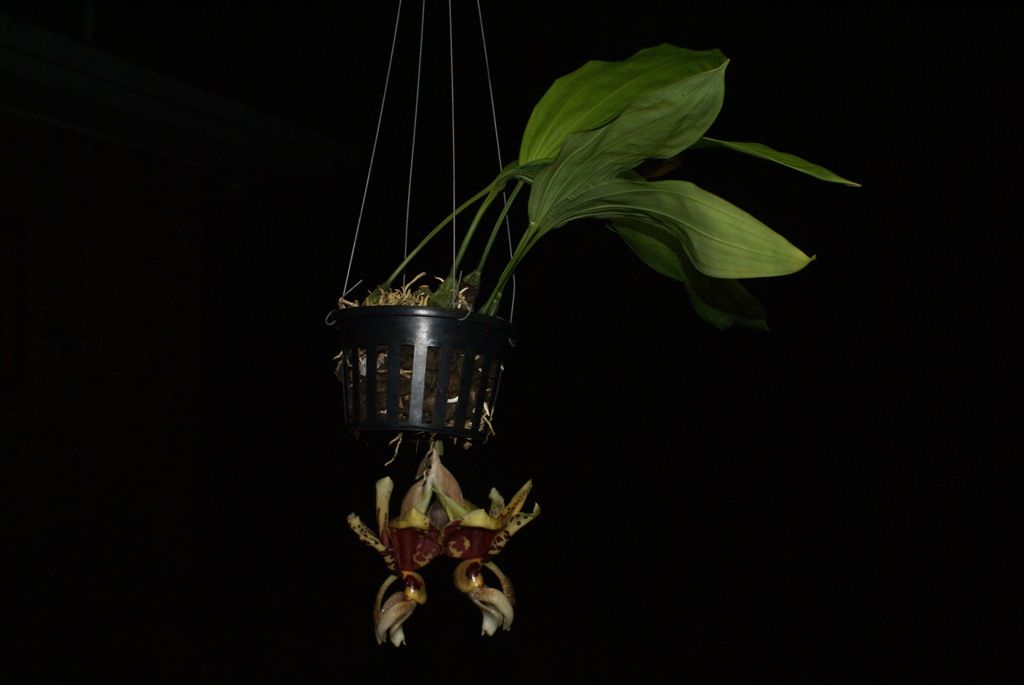 |
| Whole Plant |
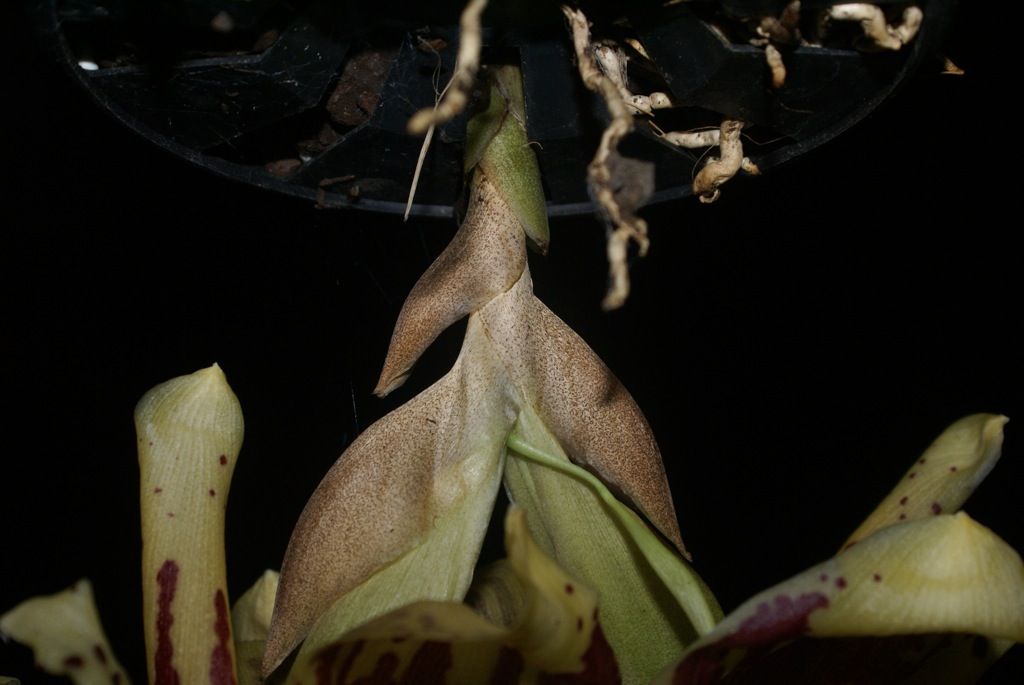 |
| flower spike sheath detail |
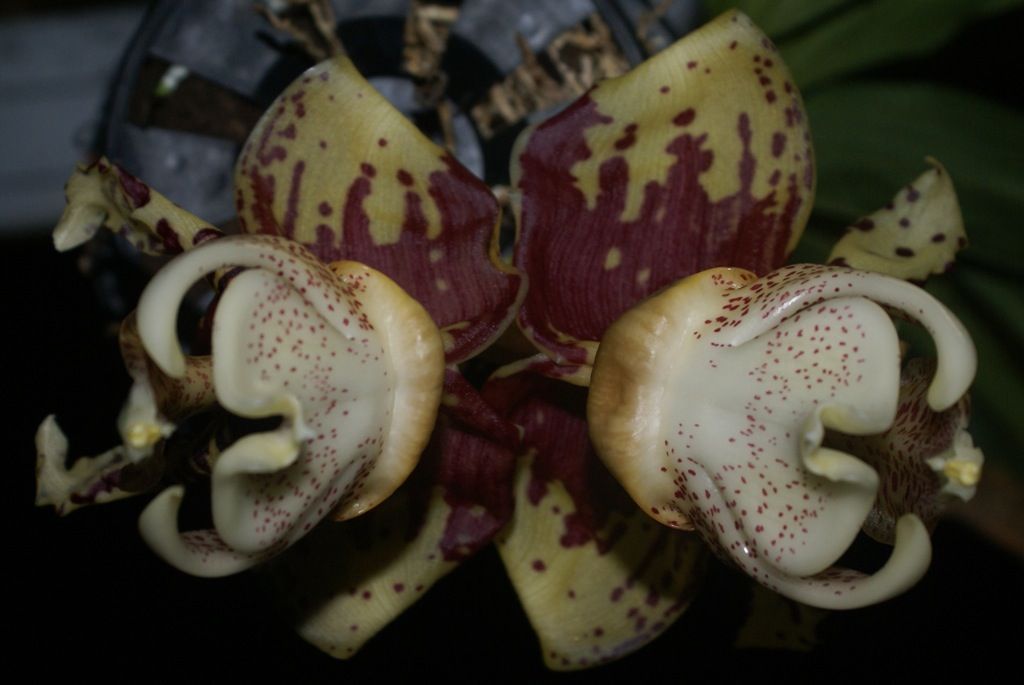 |
| view from below |
 |
| Reproductive organs |
 |
| "throat" detail |
 |
| Petal detail |
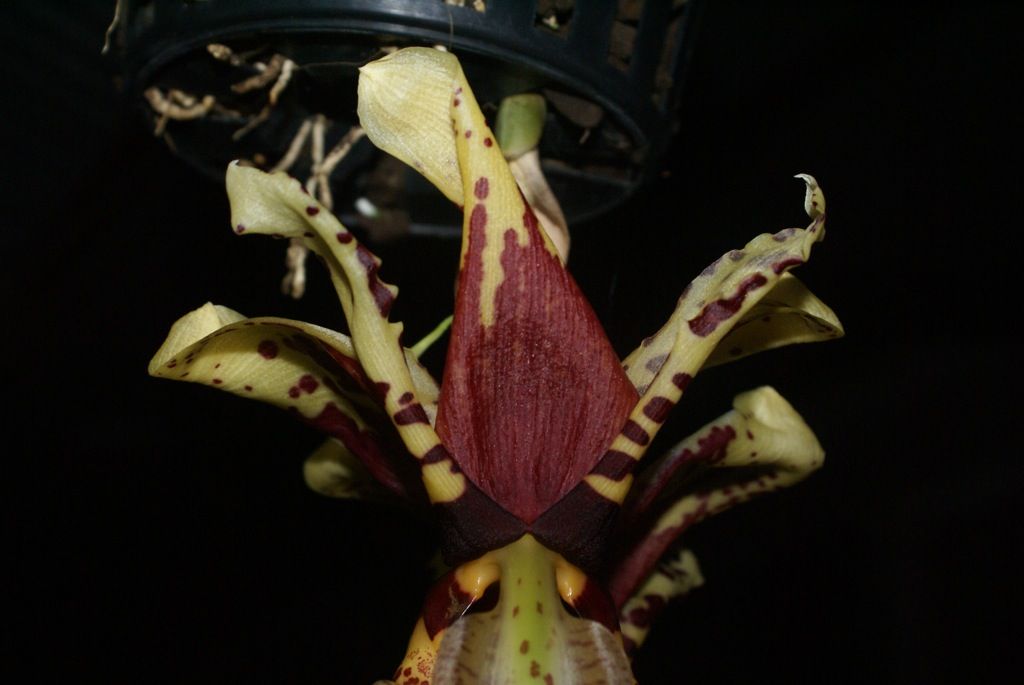 |
| Petal Detail |
 |
| Flowers |
 |
| lip/beak detail |
 |
| lip/beak detail |
Friday, January 11, 2013
Lookouts in the Lamington National Park
Hey Everyone,
I've been out being a teenager all day, seeing a movie and spending the day with friends, so I haven't had enough time to write a proper post, but yesterday I promised to show some of you a photo of the view from the look out that I spotted the Hoya australis subsp. australis at, so here are some pics.
Well, I'd best be off to bed now, and if you all don't hear from me for a few days don't worry, I'll be visiting my Grandma in Toowoomba and will no doubt end up staying a couple of days and help her with the garden :).
Happy Gardening Everyone,
Michael
I've been out being a teenager all day, seeing a movie and spending the day with friends, so I haven't had enough time to write a proper post, but yesterday I promised to show some of you a photo of the view from the look out that I spotted the Hoya australis subsp. australis at, so here are some pics.
 |
| This is looking out onto the national park, from quite a nice distance from the edge (about 2 metres or more) |
 |
| This was the view from the next lookout. The previous photos are from the mountain over on the left of the photo behind that tree :) This photo is looking down into the Numinbah Valley. |
Happy Gardening Everyone,
Michael
Wednesday, January 9, 2013
Wordless Wednesday - Hoya australis subsp. australis in Situ | 9/01/13
Hey Everyone,
I saw this Hoya australis subsp. australis in the Lamington Nation Park yesterday. It covered about 10 metres squared, and was located on the side of a VERY high cliff, hence the lack of a close up photo. As much as I love plants, I don't love them enough to risk a roughly 100m drop off a cliff just to get a better photo.
The plant was growing on that lower ledge you can see in the background.
As usual I am joining Tina for Wordless Wednesday.
Happy Gardening Everyone,
Michael
I saw this Hoya australis subsp. australis in the Lamington Nation Park yesterday. It covered about 10 metres squared, and was located on the side of a VERY high cliff, hence the lack of a close up photo. As much as I love plants, I don't love them enough to risk a roughly 100m drop off a cliff just to get a better photo.
The plant was growing on that lower ledge you can see in the background.
As usual I am joining Tina for Wordless Wednesday.
Happy Gardening Everyone,
Michael
A Fantastic Present for the Melbourne Royal Botanical Gardens | Amorphophallus titanum
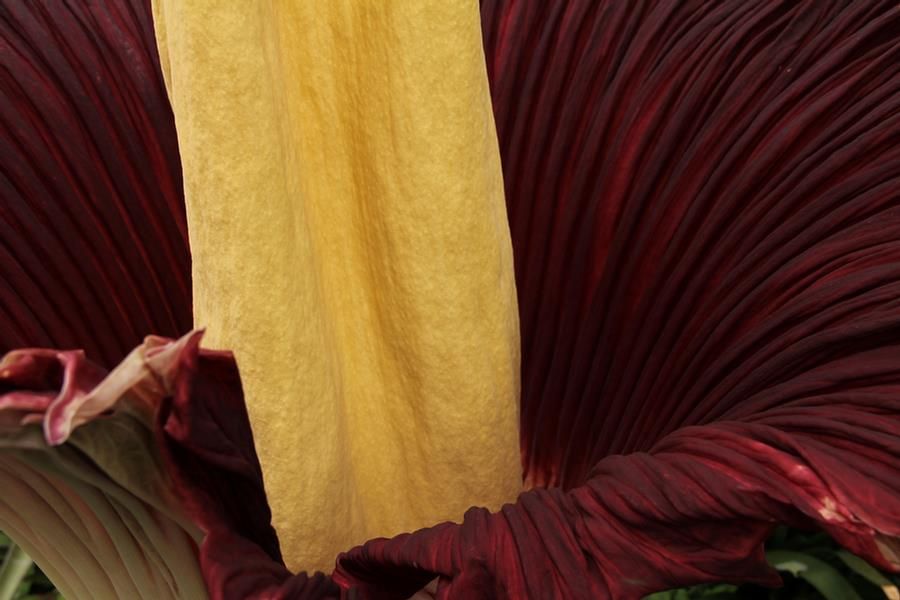 |
| © John Varigos, 2012 |
 |
| © John Varigos, 2012 |
I'm back from Bundaberg... And Binna Burra. We came home early from Bundaberg because it wasn't as enjoyable as we'd expected it would be. The turtles were absolutely AMAZING! It was so much fun seeing them, but I'll tell you all about that in another post. Since my last post I've also been up to Binna Burra again, in the Gold Coast Hinterland, and that was amazing... plenty of photos of that to share too, but as I said, later.
In my blogging absence, I was delighted to hear that one of the Melbourne Royal Botanical Garden's Amorphophallus titanum, or Titan Aurum, has flowered. When I was down there in late November (the 25th to be exact), I saw the bud of the flower, however at that stage it had not developed enough to tell wether or not it was going to grow into a flower, or a leaf.
Amorphophallus titanum is from sumatra and belongs in the Araceae family, thus meaning it's an Aroid.
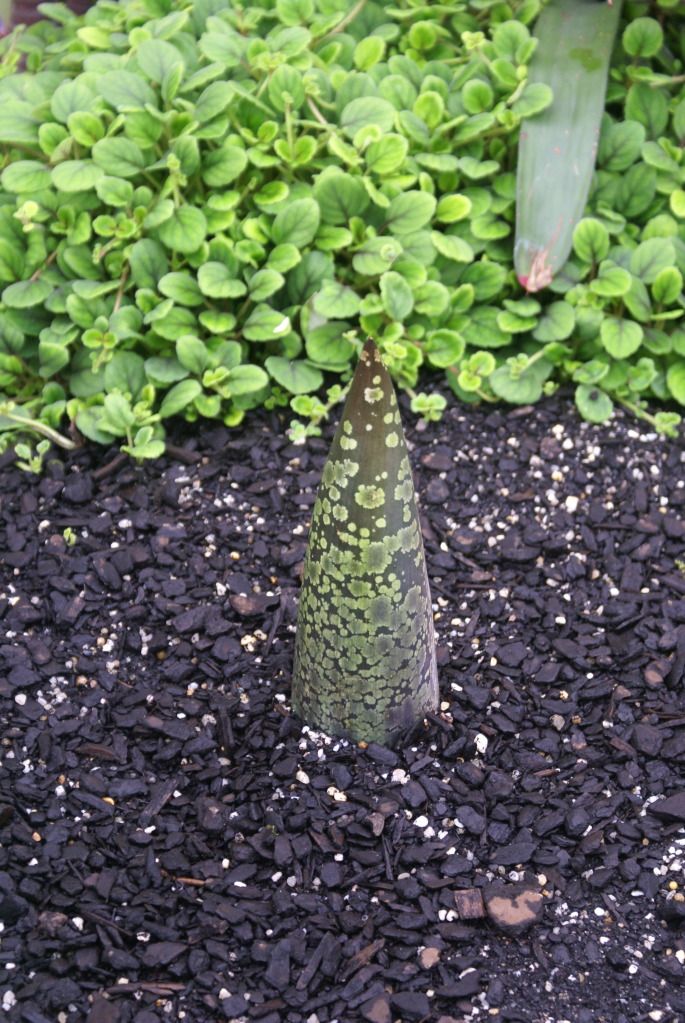 |
| The bud as I saw it on the 25th Nov. |
"The Araceae are a family of ... 125 genera and about 3750 species...
The vast majority of the genera occur in the New World tropics. Members of the family are highly diverse in life forms, leaf morphology, and inflorescence characteristics. Life forms range from submerged or free-floating aquatics to terrestrial (sometimes tuberous), and to epiphytic or hemiepiphytic plants or climbers. Leaves range from simple and entire to compound and highly divided, and may be basal or produced from an aerial stem. The family is best characterized by its distinctive inflorescence, a spadix with bisexual or unisexual (sometimes with sterile region) and subtended by a solitary spathe on a long or very short peduncle."
I just realised something really exciting... and very weird at the same time.... I COMPLETELY UNDERSTOOD WHAT ALL THAT FANCY BOTANICAL JIBBER JABBER MEANT! How cool/weird is that?!
Anyways, back to the star of the show.
So that I get my information correct and up to date, I would like to write for you what the Melbourne Royal Botanic Gardens had on their information signs about this wonderful flower, but before I do I would very much like to thank an acquaintance of mine John Varigos (who has answered many of my orchid related questions, no matter how simple or complex). John has very kindly let me use his wonderful photos of the Amorphophallus titanum in flower on my blog, therefore, please, do not copy these images unless you have John's express permission, I would hate to have abused his trust. Sadly, unlike John, I wasn't lucky enough to see this Sumatran giant in full glory so the next best thing is to see some lovely photos and I just had to share. The flower opened on christmas day, and started to collapse the day after boxing day (27th Dec.).
The first Titan Arum was discovered in 1878 by Italian botanist Odoardo Beccari in Sumatra, Indonesia. It can still be found growing in rainforest, particularly in the mountain ranges in West Sumatra. However, it is now considered to be vulnerable in the wild.
Since its discovery, botanic gardens around the world have attempted to encourage the plant to bloom in order to study and conserve the species. However, highly sophisticated cultivation protocols are required to bring this plant into flower, so prior to 1989, flowering events in botanic gardens were extremely rare, with only 21 flowering events recorded worldwide. Since 1990 approximately 80 instances of flowering have been recorded in botanic gardens across the globe.
This tuber was donated to the Royal Botanic Gardens Melbourne in 2006 by the Royal Botanic Gardens and Domain Trust in Sydney.
After sevens years of careful nurturing by Royal Botanic Gardens Nursery staff, the stunning Titan Arum is expected to reach full bloom during the week of Christmas.
The plant will feature a display of small flowers inside the base. The exact day of the bloom is difficult to determine, however once flowering, the inflorescence may only last two to three days before collapsing. The Titan Arum is usually pollinated by flies or beetles which are attracted to the powerful fragrance the flowers give off upon opening.
This Titan Arum is currently growing at a rate of around 10+ centimetres per day! It is estimated to reach between 2-3 metres in height.
Fast Facts
* The tuber can remain dormant for 1-3 years
* When active, the tuber may produce either a gigantic leaf (up to 6m tall) or an inflorescence which may reach 3m tall
* once flowering, the inflorescence may only last two to three days before collapsing
* the largest tuber ever recorded weighed 117kg
* The largest inflorescence ever recorded was 3.06m
* When fully open, the tiny female flowers omit a strong smell to attract a pollinator including insects, beetles or flies
*After pollination the Titan Arum will develop an infructescence with orange red berries
For further information: SIBBALDIA: The Journal of Botanic Garden Horticulture, No. 5"
Source: Melbourne Royal Botanical Gardens, 2012
So that I get my information correct and up to date, I would like to write for you what the Melbourne Royal Botanic Gardens had on their information signs about this wonderful flower, but before I do I would very much like to thank an acquaintance of mine John Varigos (who has answered many of my orchid related questions, no matter how simple or complex). John has very kindly let me use his wonderful photos of the Amorphophallus titanum in flower on my blog, therefore, please, do not copy these images unless you have John's express permission, I would hate to have abused his trust. Sadly, unlike John, I wasn't lucky enough to see this Sumatran giant in full glory so the next best thing is to see some lovely photos and I just had to share. The flower opened on christmas day, and started to collapse the day after boxing day (27th Dec.).
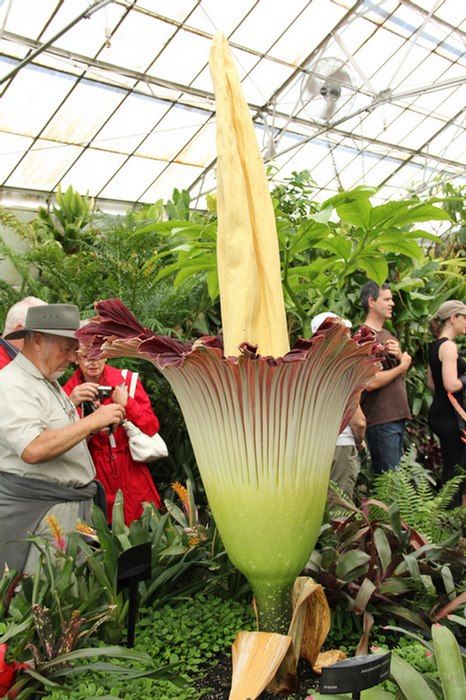 |
| © John Varigos, 2012 |
"Titan Arum
Amorphophallus titanum
The Titan Arum (Amorphophallus titanum) is known as the largest unbranched inflorescence (cluster of flowers) in the world. It is famous for its smell which is likened to rotting flesh! For this reason it is also known as Corpse Flower or Bungs Bangkai.The first Titan Arum was discovered in 1878 by Italian botanist Odoardo Beccari in Sumatra, Indonesia. It can still be found growing in rainforest, particularly in the mountain ranges in West Sumatra. However, it is now considered to be vulnerable in the wild.
Since its discovery, botanic gardens around the world have attempted to encourage the plant to bloom in order to study and conserve the species. However, highly sophisticated cultivation protocols are required to bring this plant into flower, so prior to 1989, flowering events in botanic gardens were extremely rare, with only 21 flowering events recorded worldwide. Since 1990 approximately 80 instances of flowering have been recorded in botanic gardens across the globe.
This tuber was donated to the Royal Botanic Gardens Melbourne in 2006 by the Royal Botanic Gardens and Domain Trust in Sydney.
After sevens years of careful nurturing by Royal Botanic Gardens Nursery staff, the stunning Titan Arum is expected to reach full bloom during the week of Christmas.
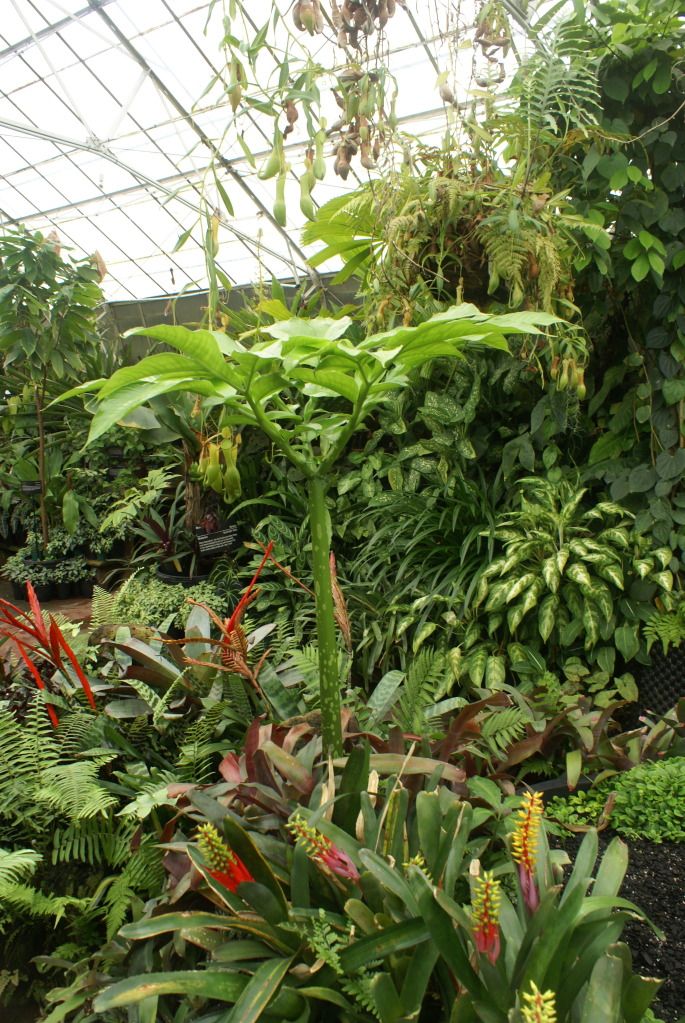 |
| the leaf of an Amorphophallus titanum |
This Titan Arum is currently growing at a rate of around 10+ centimetres per day! It is estimated to reach between 2-3 metres in height.
Fast Facts
* The tuber can remain dormant for 1-3 years
* When active, the tuber may produce either a gigantic leaf (up to 6m tall) or an inflorescence which may reach 3m tall
* once flowering, the inflorescence may only last two to three days before collapsing
* the largest tuber ever recorded weighed 117kg
* The largest inflorescence ever recorded was 3.06m
* When fully open, the tiny female flowers omit a strong smell to attract a pollinator including insects, beetles or flies
*After pollination the Titan Arum will develop an infructescence with orange red berries
For further information: SIBBALDIA: The Journal of Botanic Garden Horticulture, No. 5"
Source: Melbourne Royal Botanical Gardens, 2012
Well, I know one little gardener who's ready for bed,
Goodnight and Happy Gardening Everyone,
And I hope that those of you caught up in these DREADFUL fires at the moment, stay safe, and may your friends and loved ones stay likewise too.
Michael
Subscribe to:
Posts (Atom)
